
Filter News
Area of Research
- (-) Energy Science (84)
- (-) Supercomputing (118)
- Advanced Manufacturing (1)
- Biology and Environment (51)
- Biology and Soft Matter (1)
- Computational Biology (1)
- Computational Engineering (1)
- Computer Science (3)
- Electricity and Smart Grid (1)
- Energy Frontier Research Centers (1)
- Fusion and Fission (12)
- Fusion Energy (1)
- Isotopes (22)
- Materials (76)
- Materials for Computing (11)
- National Security (24)
- Neutron Science (24)
- Nuclear Science and Technology (10)
- Quantum information Science (5)
News Type
News Topics
- (-) Advanced Reactors (5)
- (-) Artificial Intelligence (38)
- (-) Chemical Sciences (14)
- (-) Frontier (29)
- (-) Grid (24)
- (-) Isotopes (2)
- (-) Nanotechnology (13)
- (-) Quantum Science (22)
- (-) Summit (37)
- (-) Transportation (38)
- 3-D Printing/Advanced Manufacturing (53)
- Big Data (18)
- Bioenergy (27)
- Biology (16)
- Biomedical (16)
- Biotechnology (5)
- Buildings (20)
- Clean Water (4)
- Composites (7)
- Computer Science (82)
- Coronavirus (20)
- Critical Materials (4)
- Cybersecurity (14)
- Energy Storage (48)
- Environment (44)
- Exascale Computing (24)
- Fossil Energy (2)
- Fusion (1)
- High-Performance Computing (37)
- Hydropower (1)
- Machine Learning (16)
- Materials (30)
- Materials Science (28)
- Mathematics (3)
- Mercury (2)
- Microelectronics (1)
- Microscopy (12)
- Molten Salt (1)
- National Security (11)
- Neutron Science (18)
- Nuclear Energy (9)
- Partnerships (12)
- Physics (8)
- Polymers (6)
- Quantum Computing (16)
- Security (10)
- Simulation (14)
- Software (1)
- Space Exploration (3)
Media Contacts
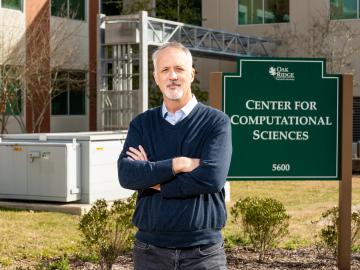
The Oak Ridge Leadership Computing Facility’s Matt Sieger has been named the project director for the OLCF-6 effort. This next OLCF undertaking will plan and build a world-class successor to the OLCF’s still-new exascale system, Frontier.
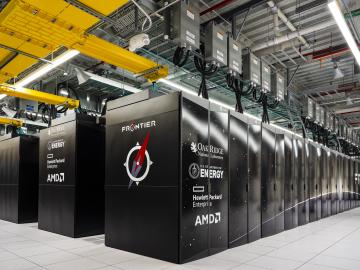
With the world’s first exascale supercomputing system now open to full user operations, research teams are harnessing Frontier’s power and speed to tackle some of the most challenging problems in modern science.

Inspired by one of the mysteries of human perception, an ORNL researcher invented a new way to hide sensitive electric grid information from cyberattack: within a constantly changing color palette.

A trio of new and improved cosmological simulation codes was unveiled in a series of presentations at the annual April Meeting of the American Physical Society in Minneapolis.
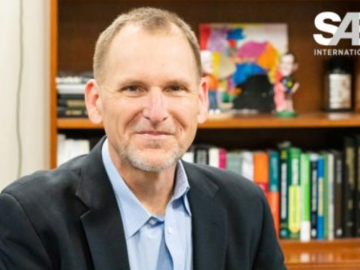
SAE International has awarded ORNL Buildings and Transportation Science Division Director Robert Wagner with the SAE Medal of Honor for his dedication and support of the organization’s mission of advancing mobility solutions.

Researchers at ORNL have developed a machine-learning inspired software package that provides end-to-end image analysis of electron and scanning probe microscopy images.

A team of researchers from ORNL was recognized by the National Cancer Institute in March for their unique contributions in the fight against cancer.
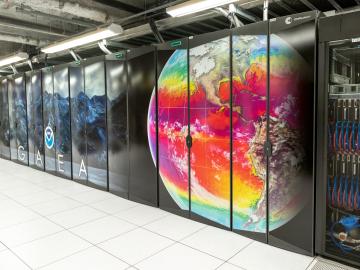
Oak Ridge National Laboratory, in partnership with the National Oceanic and Atmospheric Administration, is launching a new supercomputer dedicated to climate science research. The new system is the fifth supercomputer to be installed and run by the National Climate-Computing Research Center at ORNL.
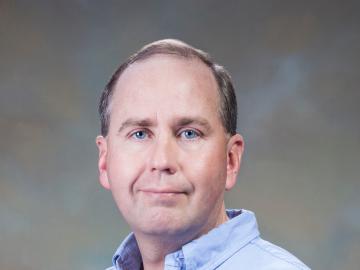
ORNL has named Michael Parks director of the Computer Science and Mathematics Division within ORNL’s Computing and Computational Sciences Directorate. His hiring became effective March 13.

Researchers at ORNL are helping modernize power management and enhance reliability in an increasingly complex electric grid.


